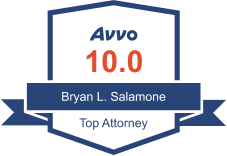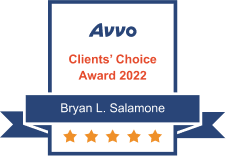Can I Make My Child Do Something Using Physical Force?
If a child is recalcitrant and a parent is unable to reason with him or her in order to visit with another parent, go to school, or attend a doctor’s appointment, many parents throw their hands up. In many custody cases, a non-custodial parent has custody time (often after going a long time without it) and the custodial parent says, “My son or daughter just won’t go.”
Judges then get very upset. They typically respond, “What if your child didn’t want to go to school?” or “What kind of parent are you, if you can’t tell your child it is important to have a relationship with his or her other parent?” The client then inevitably calls our office and wants to know what to do. Are they to drag the child to the car kicking and screaming? This only becomes more problematic when the child is fifteen and six feet tall.
In any event, we have recently received some clearer answers, because of the enormous number of family court cases that we handle, which we are pleased to share with you.
Reasonable vs. excessive force
If you are unable to get your child to visit with a non-custodial parent, you will most likely be ordered to bring that child to a therapist or receive therapeutic visitation. However, you cannot force a child, kicking and screaming, by using physical force that results in a bruise. Courts have zero tolerance for such behavior and you will wind up in a child protective services (CPS) report and/or become the subject of an Order of Protection.
If failure to get your child into the car for visitation with a non-custodial parent results in a therapist appointment, however, there is a lower standard. This states that in order to get a child to go to a necessary medical or psychological appointment, or educational institution, you may force the combative child so long as you don’t bruise them, cause injuries, or use excessive force.
In recent cases, we have seen that if a child does not go into the car for a visit with the non-custodial parent, the non-custodial parent will ask the court for therapeutic visitation or a therapy appointment. Then, if the child is not produced for the therapy appointment, there will be a contempt charge and a reversion of custody could follow. If in order to get the child to the therapist appointment the non-custodial parent shows up at the house, grabs the child by the upper arm, forcibly walks them to the car, and puts them in with great force, an order of protection will not be issued and there will be no CPS involvement.
The guidelines affecting custody and visitation, in a nutshell
- If a child is not visiting with a non-custodial parent, you cannot use force to make the child do so.
- If the child is not visiting with the non-custodial parent, the non-custodial parent should seek a therapy appointment and/or a therapeutic visitation.
- A parent may use physical force to get the child into the car to take them to the appointment. It is proper to use force below the shoulders in a non-bruising manner.
- Physical force is appropriate and proper only if the child is going to a doctor’s appointment, therapist, or school.
- Physical force is never proper, no matter what the circumstance, if it leaves bruises and/or is excessive. If you are not sure what constitutes excessive force, contact one of our lawyers for clarification.
During a recent hearing for which our firm was present, the judge spent ten minutes in a fury, proclaiming that if the child had cancer and needed chemotherapy, the parent would drag him or her to the car, throw the child inside, fasten the child’s seatbelt, and drive to the doctor. Children must do as their parents say when it is for their own good. Excessive physical force and bruising is never appropriate, but children are not legally allowed to say that they do not want to go to therapists, doctors, and school.
The law firm of Bryan L. Salamone & Associates, P.C. arguably handles more divorce and family law cases than any other New York law office. We keep track of our victories and unique decisions. We notice trends and use them to our clients’ advantages. We know what wins and what does not.





